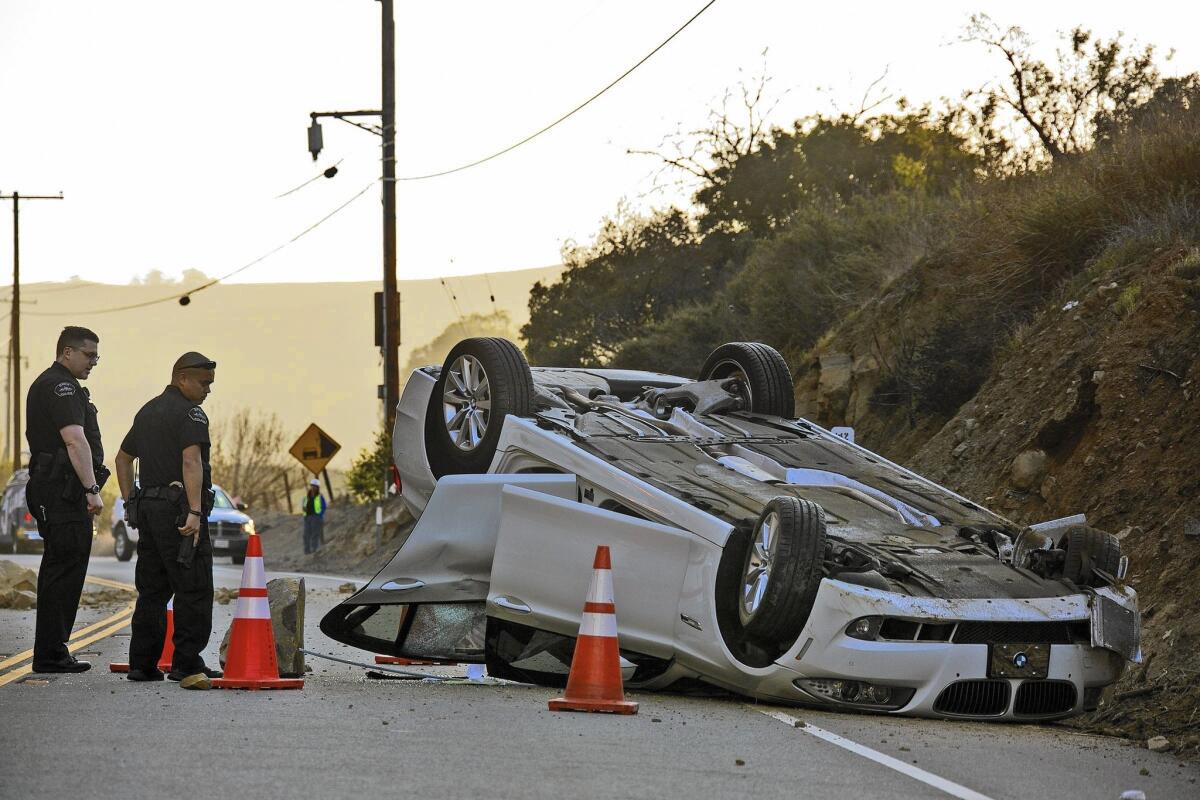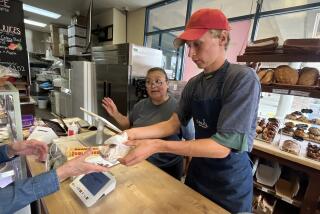Why a 99.9% earthquake prediction is 100% controversial

- Share via
The magnitude 5.1 La Habra earthquake last year was the biggest temblor to strike the metro L.A. area since 2008. Now, a scientific fight has broken out over how soon another similar earthquake could strike.
The controversy began after a report, co-written by a scientist at NASA’s Jet Propulsion Laboratory in the journal Earth and Space Science, said there was a 99.9% chance of a magnitude 5 or larger earthquake in the greater Los Angeles area by April 2018.
But that forecast was immediately disputed by the U.S. Geological Survey, the nation’s lead agency overseeing earthquake science, which says there is an 85% chance of such a quake.
The battle pivoted on two key questions: How certain can scientists be of when the next big earthquake will come? Can the dream of earthquake prediction come true?
The answer is no, according to the USGS, which took a rare public step of raising serious questions about how scientifically sound the study was. The USGS released a formal statement that said the 99.9% forecast “has not yet been examined by the long-established committees that evaluate earthquake forecasts and predictions.”
“I have serious doubts that the conclusions of the paper are supported by the analysis that’s presented there,” added Robert Graves, a USGS seismologist and Southern California coordinator for earthquake hazards.
Of the 99.9% figure, Graves said, “basically, that’s saying that’s going to happen. And that level of certainty, to my knowledge, is just not attainable. We can never be that certain.
“It does not seem like a reasonable number. There’s no information from that paper that that number can be substantiated.”
The study’s lead author, JPL research scientist Andrea Donnellan, defended the 99.9% calculation as a test of a scientific model.
“As scientists, we were not putting out an official forecast. We are putting out something in a paper to test,” Donnellan said.
Donnellan added that the USGS’ 85% probability and her 99.9% chance still favored a big earthquake in the next three years.
“If an earthquake happens in three years, we’re both right,” Donnellan said.
The study’s underpinnings rely on a well-established law of earthquake science: For every 1,000 magnitude 3 earthquakes, there are 100 magnitude 4 quakes, 10 magnitude 5 quakes, one magnitude 6 earthquake and so forth. It was established by Beno Gutenberg and Charles Richter, and is known as the Gutenberg-Richter relationship.
So, hypothetically, in any particular region, “once you get to 1,000 magnitude 3 earthquakes, you expect a magnitude 6,” said John Rundle, a study co-author and UC Davis physics and geology professor.
At the current accumulation of magnitude 3 earthquakes in a circular area within 60 miles of the La Habra earthquake, Rundle said, he expects that in another couple of years it will be time for another magnitude 5 earthquake.
But USGS seismologist Lucy Jones said this law of earthquake science never indicates the time when the next large quake will come.
“He’s put a time feature into this, and Gutenberg and Richter did not have time in the equation,” Jones said. “That’s a big divergence from the well-accepted parameters.”
Rundle said he factors in the time when the next big earthquake could occur by using something called the Weibull probability law, a statistical law used in engineering to calculate when a machine might fail over time or when an airplane might crack. Rundle says he is applying that law to earthquakes. “You can think of the small earthquakes as counting down the seconds to a big earthquake,” he said.
Rundle defended publishing alternate forecasts of future earthquakes on models different from the USGS standard, likening it to how other weather experts might issue different forecasts from the National Weather Service’s.
“It’s not a surprise that if we use different methods, we get different results,” Rundle said. “No one is saying this should go into public policy at the moment. We’re just trying to do good science and get to the bottom of this and improve our forecasting capabilities.”
Jones said that there is reason to understand the limitations of the 99.9% figure. For example, the study’s authors have not shared their model with other scientific committees that vet earthquake forecast simulations, Jones said.
“One can argue how irresponsible it is to tell the public ’99.9% chance,’” Jones said. “The question is whether or not we should listen to it.
We don’t believe this is proven well enough to be worth any change in our advice to local governments. It’s not justified. It’s not tested.
— Lucy Jones, USGS seismologist
“We don’t believe this is proven well enough to be worth any change in our advice to local governments. It’s not justified. It’s not tested.”
Rundle criticized the panels that vet quake forecast models as “self-serving,” benefiting the institutions that run them. “The only real test of an earthquake forecast is to test it and put it out there,” he said. “No one can tell us to not publish peer-reviewed research that’s funded by the U.S. government and NASA.”
The USGS’ figure, an 85% probability of a magnitude 5 or greater earthquake in the next three years, was developed as part of a comprehensive update to earthquake forecasts. It’s called the Third Uniform California Earthquake Rupture Forecast, also known as UCERF3, and was developed by a broad array of scientists over several years.
The idea that earthquakes can be predicted at a particular time and location is often tantalizing, but is not rooted in sound science, Graves said. In trying to forecast the next big quake by location and over a certain date, scientists have endured an “evolving process of eating crow and understanding how little we understand.”
One of the most famous cases in which scientists tried to predict the next earthquake involved the San Andreas fault around the Central California town of Parkfield. A big earthquake had occurred there an average of every 22 years between 1857 and 1966, so scientists forecast a 95% chance that another magnitude 6 or greater earthquake would hit between 1988 and 1993.
They were wrong. The next big earthquake came more than a decade later, in 2004.
Twitter: @ronlin
ALSO:
Clinton seeks the high ground during Benghazi panel’s grilling
Russia’s teen military clubs: Patriotism or echoes of fascism?
Mexico braces for Patricia, the Western hemisphere’s strongest hurricane ever







